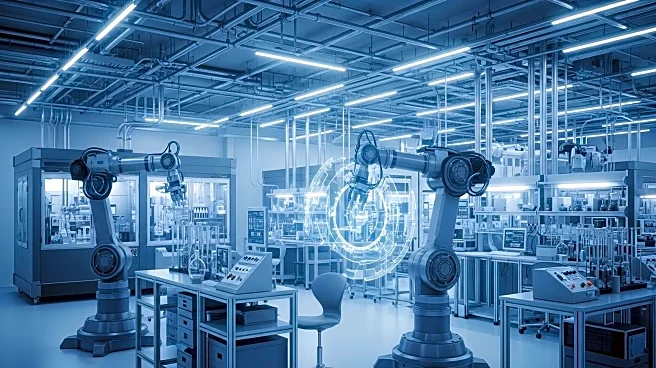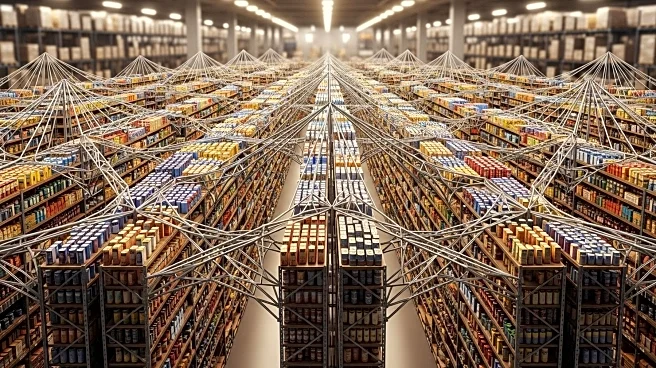What is the story about?
What's Happening?
The Industrials sector is currently experiencing significant challenges due to a combination of slowing manufacturing activity and rising material costs. As of September 23, 2025, the S&P Global US Manufacturing PMI has decreased to 52 from a three-year high of 53 in August, indicating a slower pace of expansion. New orders are growing marginally, partly due to increased export losses from ongoing tariffs. Additionally, the ISM Manufacturing PMI remains in contraction territory at 48.7 in August, highlighting persistent struggles in industrial output. Industrial companies are facing elevated material prices, which have been among the highest since the pandemic, eroding manufacturing profits as raw material expenses outpace sales growth. According to the National Association of Manufacturers' Q3 2025 Outlook Survey, trade uncertainty and rising raw material costs are primary business concerns for 78.2% and 68.1% of manufacturers, respectively.
Why It's Important?
The current pressures on the Industrials sector are creating a distinct divergence within the market. Companies with robust operational efficiencies and adaptable business models are likely to fare better, while those with high cyclical exposure or reliance on volatile commodities may struggle. Automation and technology providers, maintenance, repair, and operations providers, and manufacturers for essential sectors are positioned to benefit from the strategic pivot towards efficiency-enhancing technologies. Conversely, heavy industrial manufacturers, commodity-dependent manufacturers, and export-oriented manufacturers face significant margin compression and vulnerability to trade uncertainties. The broader implications include potential industry consolidation, accelerated investment in advanced manufacturing technologies, and a renewed focus on supply chain resilience.
What's Next?
As the Industrials sector navigates these challenges, companies will focus on cost control, inventory management, and preserving liquidity. Strategic pivots will be crucial, with an emphasis on lean manufacturing principles, automation investments, and aggressive negotiation with suppliers. Companies with strong balance sheets and access to capital will be better positioned to weather the storm and potentially make opportunistic acquisitions. The divergence between resilient and vulnerable companies will likely widen, with those investing in digital transformation and agile supply chains emerging stronger. Investors should monitor key economic indicators and company earnings reports for insights into how firms are managing these challenges.
Beyond the Headlines
The current economic headwinds are poised to reshape the manufacturing landscape, driving consolidation, technological adoption, and a focus on supply chain resilience. Companies will need to scrutinize discretionary spending, optimize operational efficiencies, and potentially delay non-essential capital projects. The emphasis on mitigating labor and material cost pressures will accelerate investment in advanced manufacturing technologies, such as automation, robotics, and the Industrial Internet of Things. The disruptions experienced in recent years, combined with current material price volatility, are pushing companies to de-risk their sourcing strategies, potentially involving nearshoring or reshoring.
AI Generated Content
Do you find this article useful?













